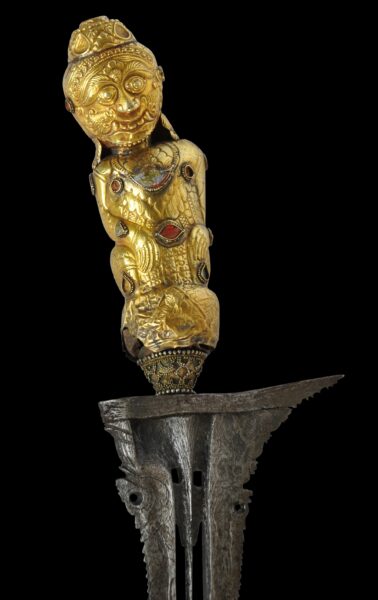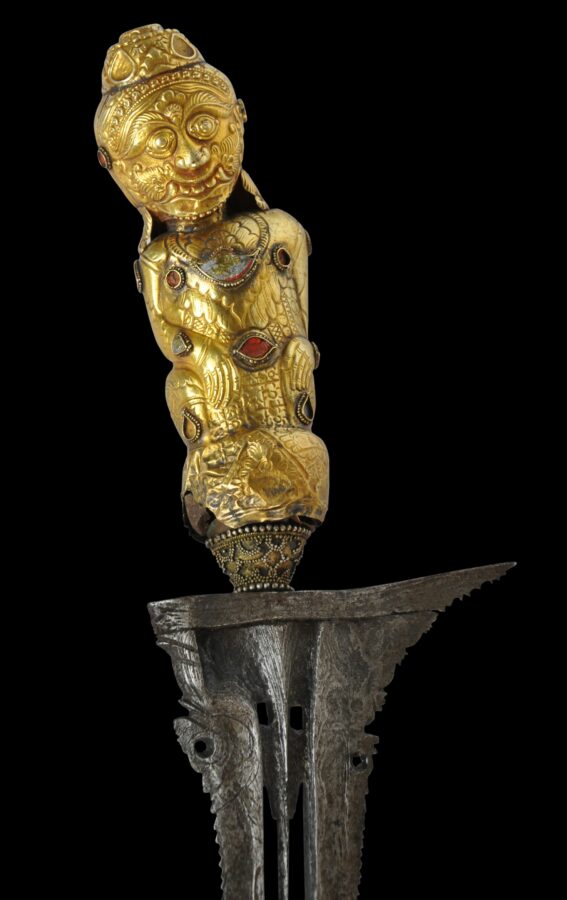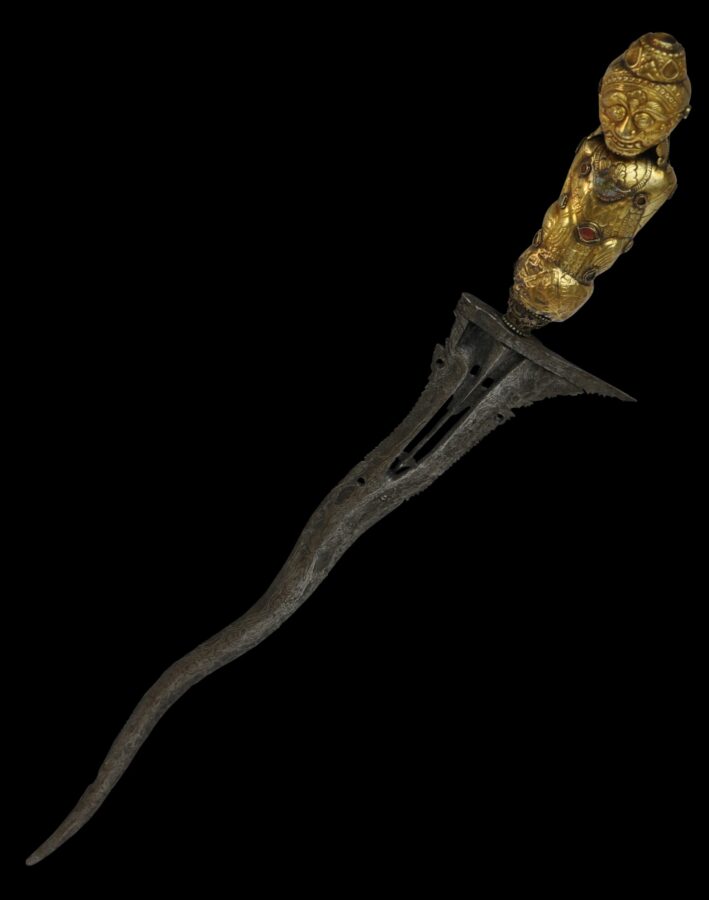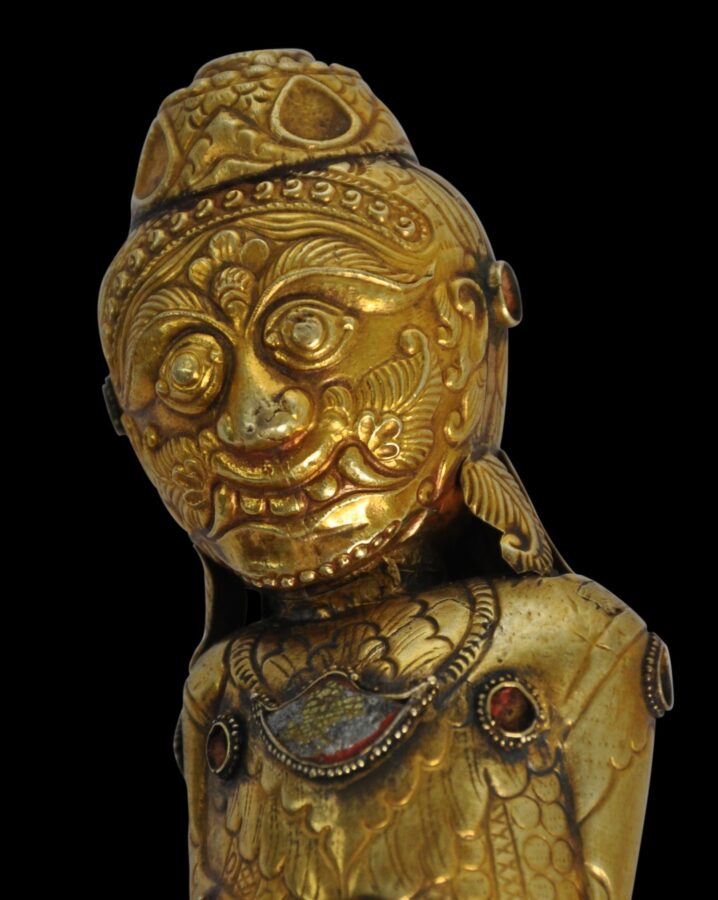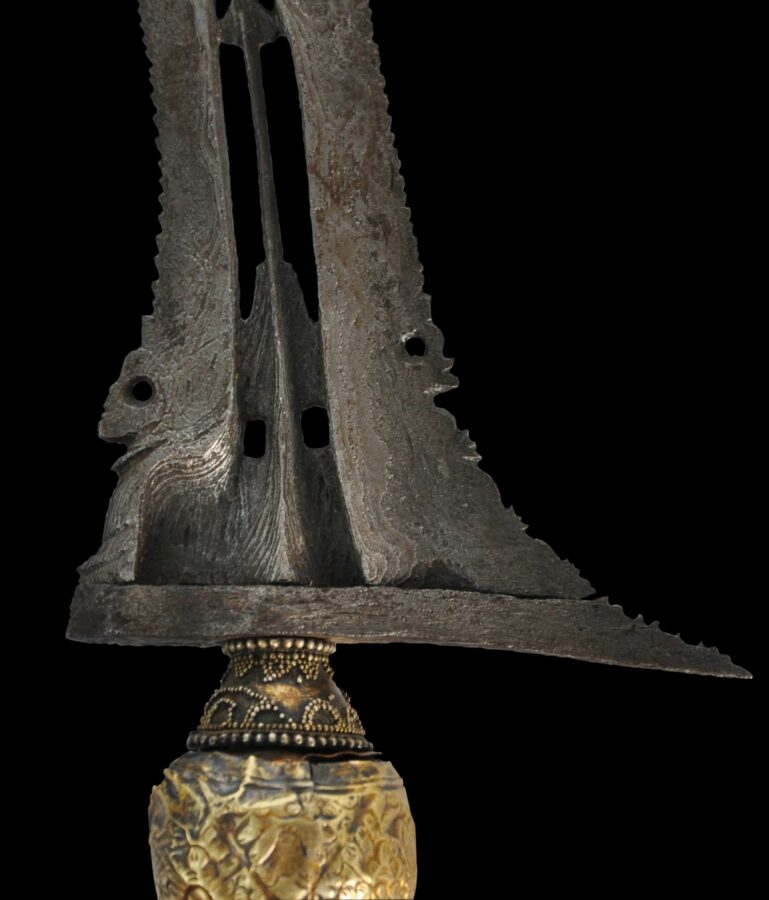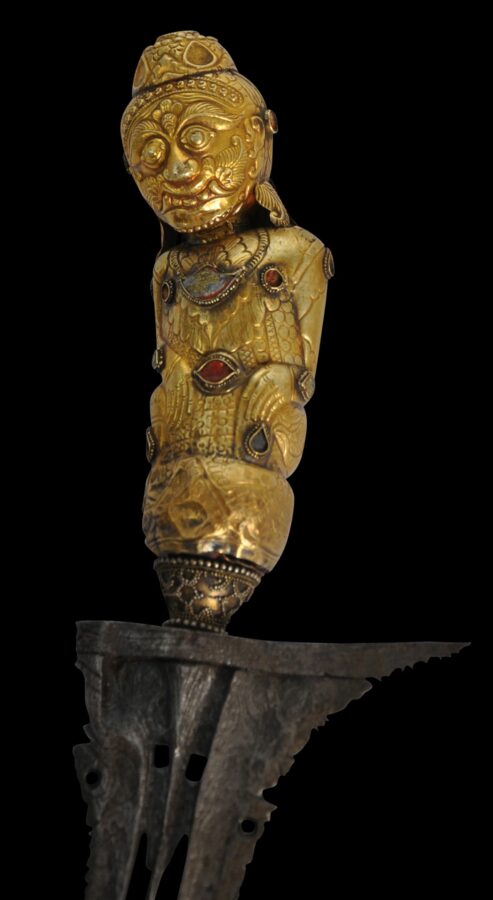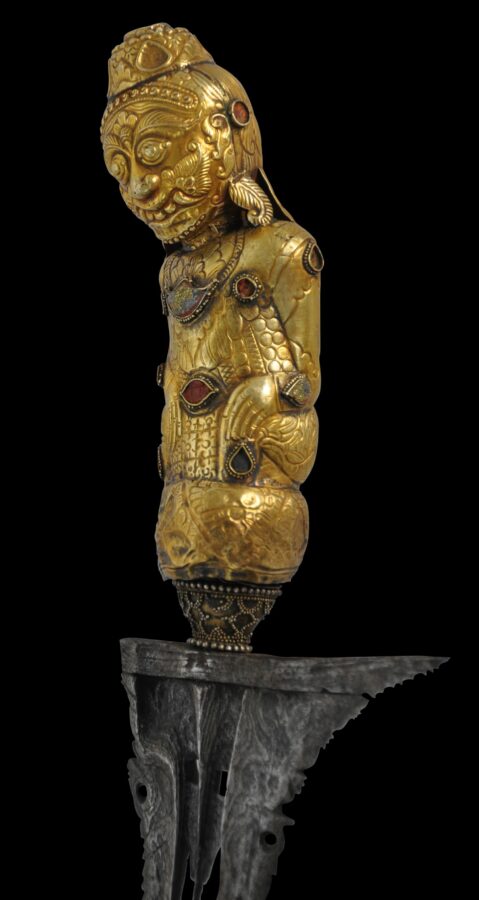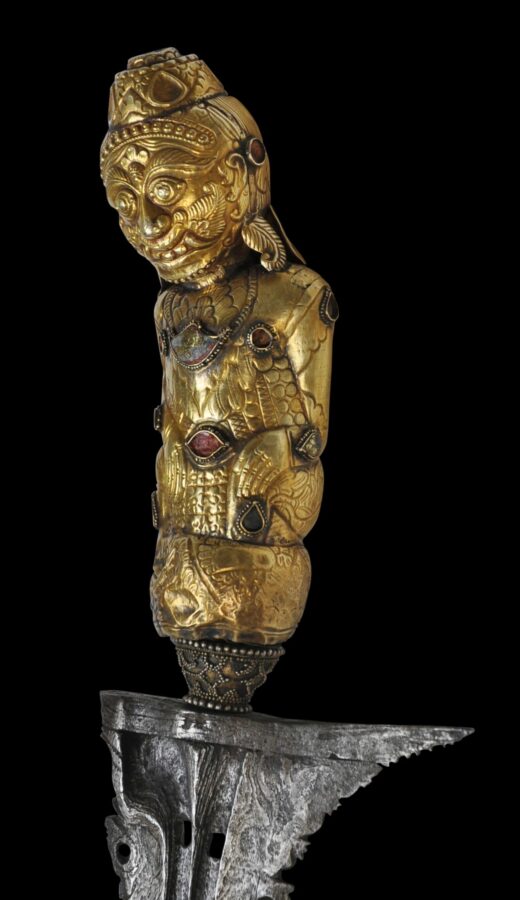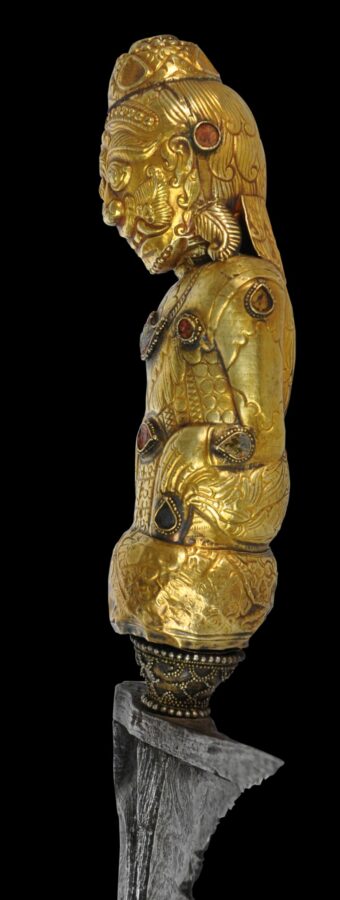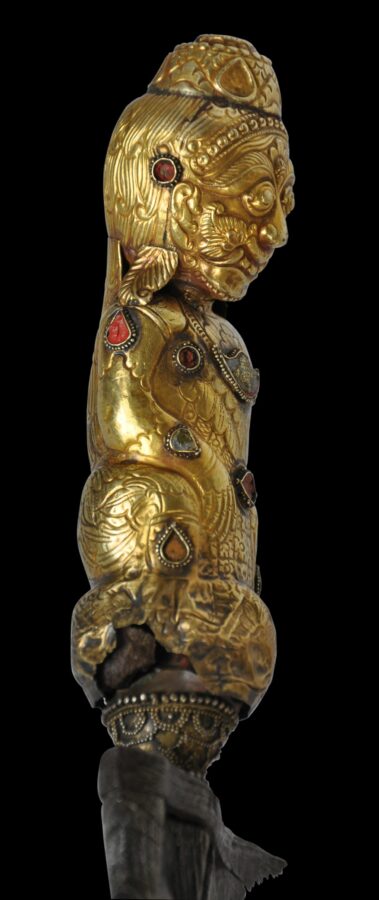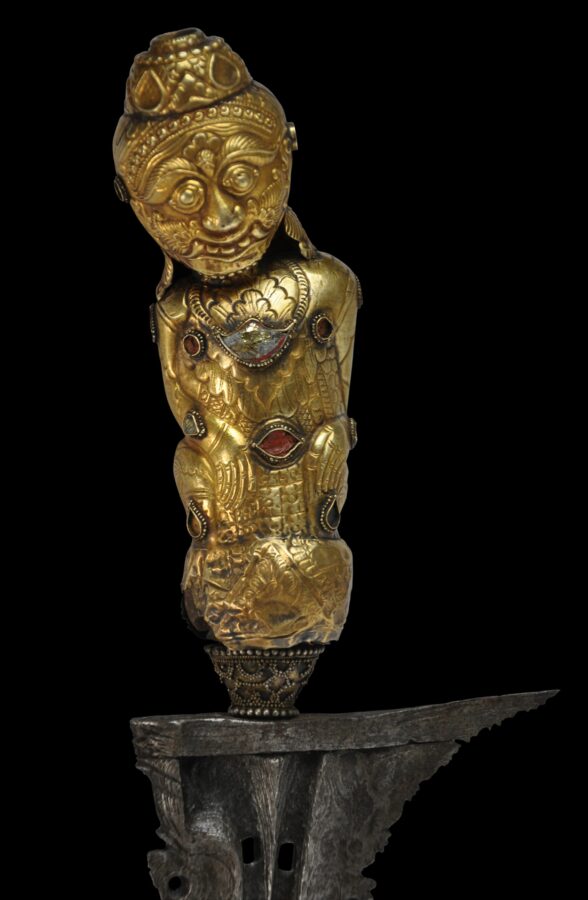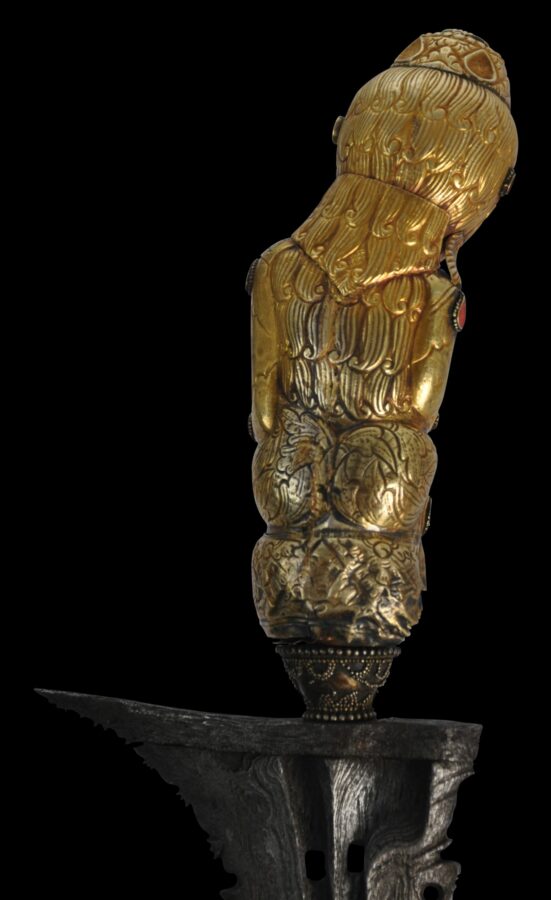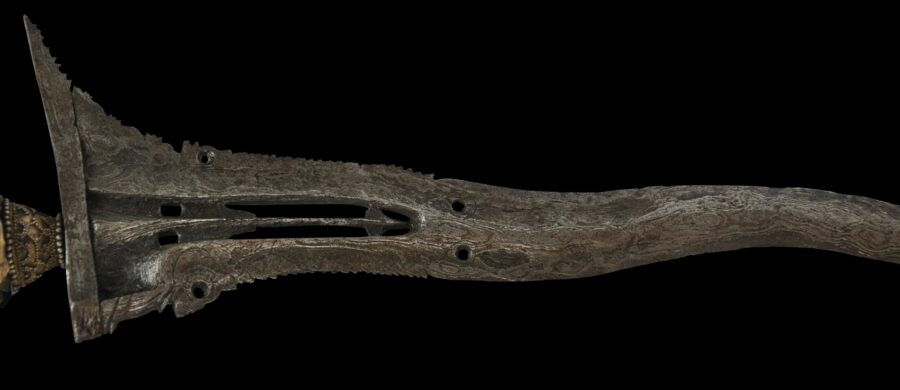This kris dates to the 14th-15th century of Java’s Majapahit era. The kris and the blade are original to each other. The hilt is covered in thin gold sheet over an inner core and was inlaid with stones.
The wavy blade is of watered iron, is pierced, and has small, chiselled humanoid or foetus-like motifs known as a putut figures that decorate each side of the base of the blade.
The hilt is in the form or a demon-like figure with fanged teeth and a crown. The figure leans slightly to his right. Possibly, it is the demon-hero Bhima.
The granular bead around the chin of the figure is a typically Majapahit affectation not seen in later kris handles. Miksic (1990. p. 117) illustrates a gold example from the late Classic period (AD1000-AD1400) which is very similar in form, construction and with box settings for stones and it too has an almost identical granular beard. Indeed, the granular beard is a characteristic useful in both authenticating and dating the piece.
Leafy flanges protrude from the figure’s ears – also another Majapahit stylistic feature.
The hilt ring is decorated with fine gold granulation work.
Such blades and hilts are rare and are thought to have been the prerogative of royalty.
Such blades were deemed to be particularly magical. An example of a putut blade is ilustrated in Hardi (2010, p. 142). Krises are imbued with special powers in Indonesia and rarer examples are especially magical. Traditionally, it was believed that the possessor of a putut kris would find that his debts were forgiven, for example.
The example here is missing most of the stones from the hilt and there is a small section of gold loss to the lower part of the hilt. This however is more than compensated for by the antiquity and rarity of this piece.
References
Ghiringhelli, V., Kris Hilts: Masterpieces of South-East Asian Art, 5 Continents, 2011.
Hales, R., Islamic and Oriental Arms and Armour: A Lifetime’s Passion, Robert Hale CI Ltd, 2013.
Hardi, H. et al, Keris untuk Dunia / Keris for the World 2010, Paguyuban Pelestari ari Tosan aji Nusantara, 2010.
Miksic, J., Old Javanese Gold, Ideation, 1990.
Sejr Jensen, K., ‘The kris and its symbols’ in Arts of Asia, May-June 2008.
Sheppard, M., Taman Indera: Malay Decorative Arts and Pastimes, Oxford University Press, 1972.
Wilkinson, R.J., ‘Papers on Malay customs and beliefs’ [first published in 1906 & 1908], reprinted in Journal of the Malayan Branch of the Royal Asiatic Society, Vol. XXX, Part 4, November 1957.


